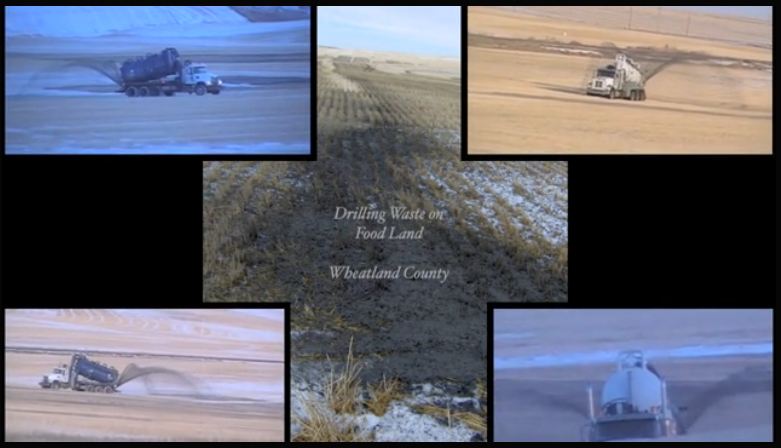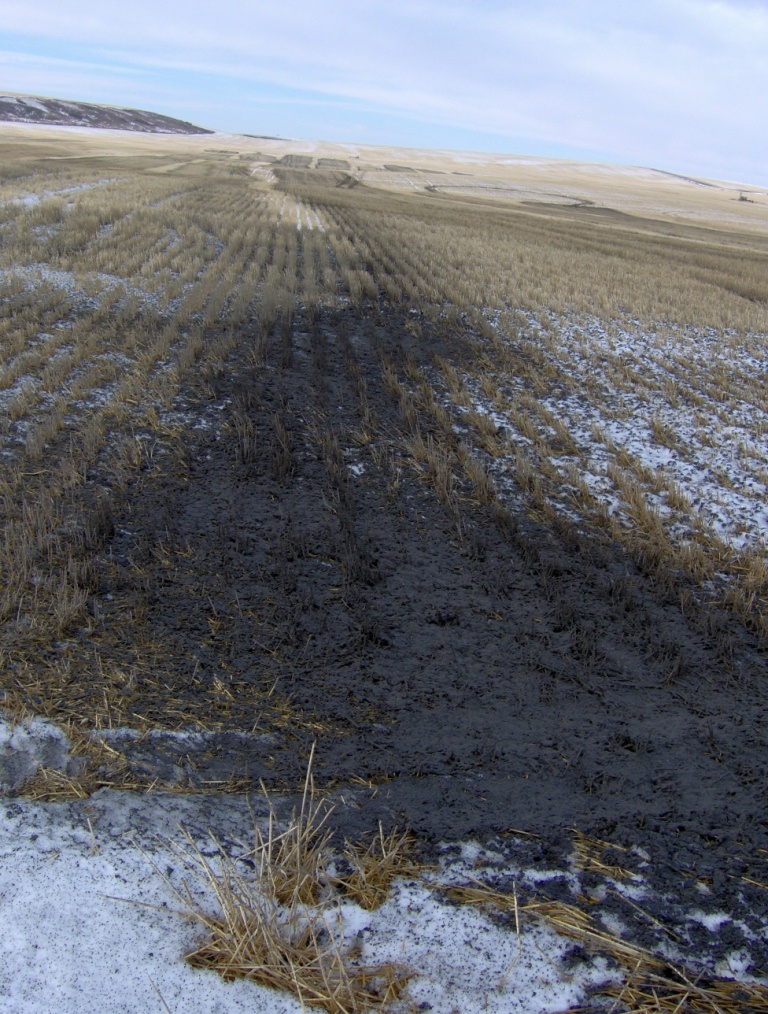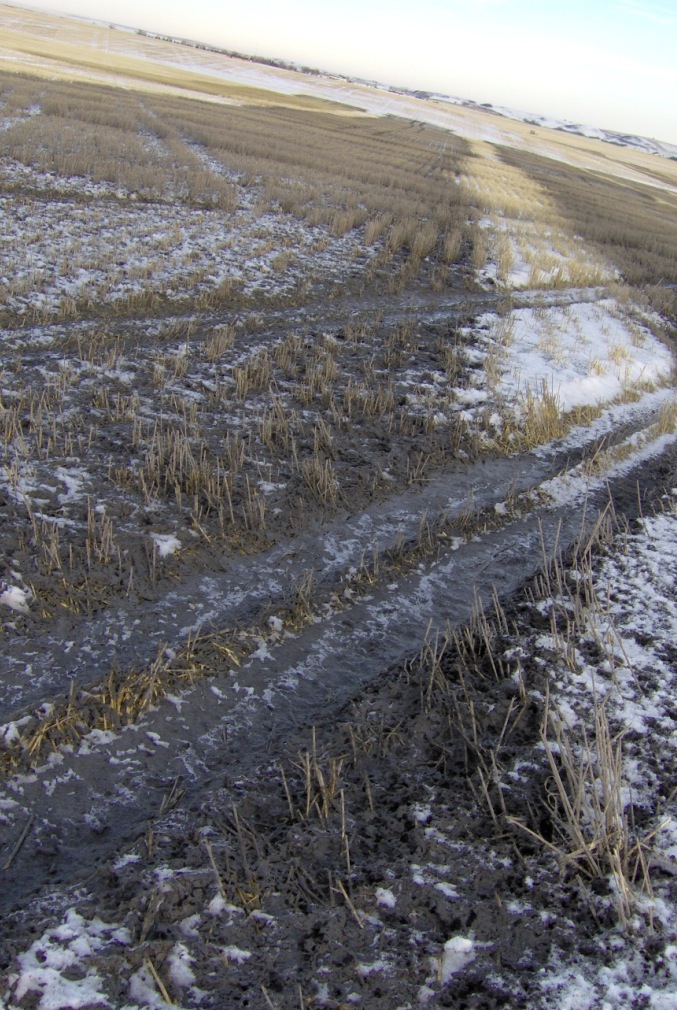
Encana/Ovintiv got rid of its waste on our roads too (under guise of dust suppression) and bribed farmers (for a pittance) to accept the waste dumped on crop and pasture lands, including immediately next to my home, filling it with petroleum stench. I was not given advance warning to enable me to close the windows and avoid being outside. Other companies do it too, everywhere, even on winter roads in the muskeg.
Canada is a cesspool of toxic corporate rape & pillage pollution, aided by politicians, regulators and courts. We rarely get studies such as this, too many of our academics are frac’d by oil and gas donations, some of the biggest by Encana.




New Pitt-Duquesne Study Shows Higher Exposures To Radiation In Road Dumping Of Drilling Wastewater When Appropriate Exposure Scenarios Are Used by David E. Hess, Nov 19, 2021, PA Environment Digest Blog

A new study released November 2 by authors from the University of Pittsburgh and Duquesne University shows constant exposure of residents living next to and using roads spread with conventional oil and gas drilling wastewater results in higher levels of exposure to radiation in the wastewater when the appropriate exposure scenarios are used.
The study– Oil And Gas Wastewater As Road Treatment: Radioactive Material Exposure Implications At The Residential Lot And Block Scale by Dr. Daniel Bain of the University of Pittsburgh’s Department of Geology And Environmental Science, Dr. John F. Stolz of Duquesne University’s Bayer School of Natural and Environmental Sciences, and other authors– analyzed samples of AquaSalina, a commercial dust suppressant and deicer product made from oil and gas drilling wastewater from the Appalachian Basin and produced in Ohio.
[Note: In October, the Ohio Department of Transportation announced it is no longer going to purchase AquaSalina due, in part, to concerns about high levels of radioactivity and other contaminants in the product. Read more here.]
“Current decision making is based on risk exposure scenarios developed by regulatory agencies based on recreational users in rural areas and exposures to drivers during a typical commute.
“These scenarios are not appropriate for evaluating exposures to residential deicer users or people living near treated streets.”
The road “spreading” of oil and gas wastewater on dirt roads typically involves a vac truck making three or more passes on each section of road using a combination of an open value on the back of the truck and then a blanket pass with a homemade spreader bar that offers no control on the amount of wastewater spread. See Photos Here. Read more here.
This can be done multiple times from March through November for dust suppression, and again during the winter when the roads are frozen.
“Measurement of [radioactive] radium concentrations revealed substantial concentrations of radium in the O&G brine deicer product [AquaSalina]– 226Ra activity was 625 +/− 86 pCi/L and 228Ra 516 +/− 44.9 pCi/L.”
“Exposure scenarios currently used for regulatory assessment of brine road treatment result in predicted exposures of 0.4–0.6 mrem/year. Residential exposures predicted by the scenarios developed in this work are 4.6 mrem/year.
“If the maximum range of near-road soil radium concentrations observed in the region [by DEP] is used in this residential scenario (60 pCi/g 226Ra, 50 pCi/g 228Ra), residents living near these roads would be exposed to an estimated 296 mrems/year, above regulatory exposure thresholds used in nuclear facility siting assessments [100 mrems/year].”
The new study noted the results from a 2016 Department of Environmental Protection study of naturally occurring radiation [NORM] in oil and gas wastewater that is often quoted offered limited results because it assumed only “recreational” exposure to radiation from the wastewater, not the more realistic constant exposure from residents living along a dirt road or rural road that is repeatedly subjected to wastewater “spreading.” Read more here.
In DEP’s study, “recreational” exposure meant two hours per day, three days per week all outdoors. No constant indoor or other exposures were included, according to this new study.
The new study assumed an exposure of 12 hours per day indoors, six hours per day outdoors, seven days a week.
“The accumulation of Ra [radium] near O&G brine road treatments can be substantial,” according to the Department of Environmental Protection’s 2016 study.
The new study also points out, “When applied to roads, the NORM [naturally occurring radiation] in O&G [oil and gas well] brine products would accumulate in streams and engineered systems receiving storm water (Ra [radium] accumulates in stream sediments downstream of brine disposal facilities.
“This accumulation would be much faster than in residential situations as storm water outfalls receive flow and associated NORM from many meters of roadway.
“While areas with combined sewer systems would route NORM to the sewage treatment plant, any leaks in these lines or areas with storm sewer systems would introduce NORM to local systems.
“Municipal managers striving to meet imminent Municipal Separate Storm Sewer (MS4) regulations would face the additional challenge of mitigating Ra accumulations near stormwater outfalls or in engineered retention systems.
“The potential distribution of NORM to waters downstream of stormwater infrastructure following road treatment has the potential to make stormwater management more complicated and expensive.”
“These results underline the urgent need to clarify exposure risks from the use of oil and gas brines as a road treatment, particularly given the existing disparities in the distribution of road impacts across socioeconomic status.”
“The concept of risk assumes that individuals can make choices to adjust their exposure. It is not clear this is the case for a resident that purchases a property with historical O&G brine deicer use or lives next to a neighbor who uses a brine product. What is even less clear is the ability of residents living near major transportation routes to control their risk.”
Conclusions
“The reuse of wastewater from conventional O&G extraction as a road and residential deicing treatment has the potential to distribute NORM broadly across sometimes densely populated areas.
“This redistribution likely increases exposures for substantial and unexpecting portions of the public.
“The actual exposure, while low on an individual deicer application basis, has the potential to accumulate and create higher exposure levels through time.
“Further, the potential risk may (1) reinforce existing patterns in socioeconomic inequity and (2) complicate efforts to address aging water infrastructure.”
Click Here for a copy of the study.
Related Articles This Week:
— A First-Hand Account Of How Repeated, Unlimited Road Dumping Of Oil & Gas Drilling Wastewater Is Tearing Apart Dirt Roads And Creating Multiple Environmental Hazards – By Siri Lawson, Farmington Township, Warren County
— Fair Shake Environmental Legal Services, FracTracker Alliance Call On Citizens To Report Road Dumping Of Oil & Gas Drilling Wastewater
— Trout Unlimited: What Do Pennsylvania’s Dirt And Gravel Roads Have To Do With Trout?
— Marcellus Shale Coalition Challenges EQB Authority To Increase Bond Amounts For Conventional Oil & Gas Wells; Majority Of 100,508 Conventional Wells Not Required To Have Any Bonds
Related Article Last Week:
— Bay Journal: Dirt Roads & Drilling Wastewater – Dustup Rises Over Health Issues
Related Articles:
— Op-Ed: Will Our Dirt Roads Again Be Used As Dumping Sites For Oil & Gas Well Wastewater
— Op-Ed: The Story Behind Stopping Conventional Oil & Gas Brine Spreading On Dirt Roads
— House Republicans Pass Bill Legalizing Road Dumping Of Conventional Oil & Gas Well Wastewater, Rolling Back Environmental Protection Standards[Posted: November 19, 2021] PA Environment Digest
